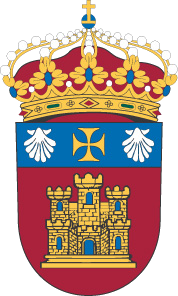Mostrar el registro sencillo del ítem
| dc.contributor.author | Martín, Óscar | |
| dc.contributor.author | Ahedo García, Virginia | |
| dc.contributor.author | Santos Martín, José Ignacio | |
| dc.contributor.author | Galán Ordax, José Manuel | |
| dc.date.accessioned | 2022-02-02T10:20:06Z | |
| dc.date.available | 2022-02-02T10:20:06Z | |
| dc.date.issued | 2022-01 | |
| dc.identifier.uri | http://hdl.handle.net/10259/6386 | |
| dc.description.abstract | Resistance spot welding (RSW) is a widespread manufacturing process in the automotive industry. There are different approaches for assessing the quality level of RSW joints. Multi-input-single-output methods, which take as inputs either the intrinsic parameters of the welding process or ultrasonic nondestructive testing variables, are commonly used. This work demonstrates that the combined use of both types of inputs can significantly improve the already competitive approach based exclusively on ultrasonic analyses. The use of stacking of tree ensemble models as classifiers dominates the classification results in terms of accuracy, F-measure and area under the receiver operating characteristic curve metrics. Through variable importance analyses, the results show that although the welding process parameters are less relevant than the ultrasonic testing variables, some of the former provide marginal information not fully captured by the latter. | en |
| dc.description.sponsorship | This work was supported in part by the Spanish Ministry of Science, Innovation and Universities (Excellence Networks) under Grant HAR2017-90883-REDC and Grant RED2018-102518-T, and in part by the Junta de Castilla y León Consejería de Educación under Grant BDNS 425389. The work of Virginia Ahedo was supported by the European Social Fund. | en |
| dc.format.mimetype | application/pdf | |
| dc.language.iso | eng | es |
| dc.publisher | Institute of Electrical and Electronics Engineers (IEEE) | en |
| dc.relation.ispartof | IEEE Access. 2022, V. 10, p. 6518-6527 | en |
| dc.rights | Atribución 4.0 Internacional | * |
| dc.rights.uri | http://creativecommons.org/licenses/by/4.0/ | * |
| dc.subject | Resistance spot welding | en |
| dc.subject | Quality control | en |
| dc.subject | Welding parameters | en |
| dc.subject | Ultrasonic testing | en |
| dc.subject | Tree ensembles | en |
| dc.subject | Stacking | en |
| dc.subject | Welding | en |
| dc.subject | Acoustics | en |
| dc.subject | Classification algorithms | en |
| dc.subject | Electrodes | en |
| dc.subject | Steel | en |
| dc.subject | Boosting | en |
| dc.subject | Testing | en |
| dc.subject.other | Materiales | es |
| dc.subject.other | Materials | en |
| dc.subject.other | Ingeniería mecánica | es |
| dc.subject.other | Mechanical engineering | en |
| dc.subject.other | Ensayos (Tecnología) | es |
| dc.subject.other | Testing | en |
| dc.title | Comparative study of classification algorithms for quality assessment of resistance spot welding joints from preand post-welding inputs | en |
| dc.type | info:eu-repo/semantics/article | es |
| dc.rights.accessRights | info:eu-repo/semantics/openAccess | es |
| dc.relation.publisherversion | https://doi.org/10.1109/ACCESS.2022.3142515 | es |
| dc.identifier.doi | 10.1109/ACCESS.2022.3142515 | |
| dc.relation.projectID | info:eu-repo/grantAgreement/AEI/Plan Estatal de Investigación Científica y Técnica y de Innovación 2013-2016/HAR2017-90883-REDC/ES/Simular el pasado para entender el comportamiento humano | es |
| dc.relation.projectID | info:eu-repo/grantAgreement/AEI/Plan Estatal de Investigación Científica y Técnica y de Innovación 2017-2020/RED2018-102518-T/ES/SISTEMAS COMPLEJOS SOCIOTECNOLOGICOS | es |
| dc.identifier.essn | 2169-3536 | |
| dc.journal.title | IEEE Access | en |
| dc.page.initial | 1 | es |
| dc.page.final | 1 | es |
| dc.type.hasVersion | info:eu-repo/semantics/publishedVersion | es |





 ;
;